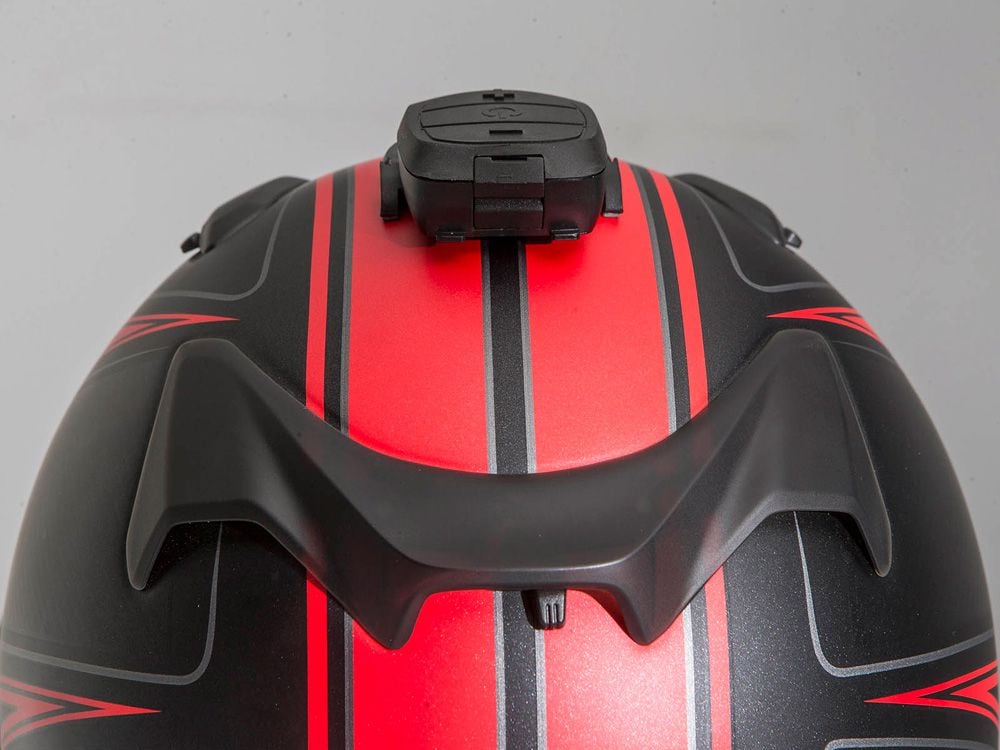- Joined
- Jun 16, 2019
- Messages
- 562
- Bike
- 2010 NT700V
For those unaware, bone conduction headphones don't go in your ears. Typically they are designed to sit just in front of the ear lightly pinching your cheek bones. Vibrations from transducers are transmitted directly to the bones of the inner ear, bypassing the eardrum. As a benefit you can leave ear canals free to hear ambient sounds, and these are the only headphones numerous biking/running race orgs allow. However, an often overlooked feature is using them with earplugs. Since they don't rely on the eardrum, you can plug up the ear canal and still hear audio. It actually sounds more rich with increased bass. I often ride with earplugs for wind protection, so bone conduction is a perfect candidate to try.
This came about because recently I tried installing some headset speakers in my Shoei, and the final fit wasn't good. It then dawned on me to try wearing the bone conduction headphones I already owned. This honestly should have been a no-brainer experiment to try before even buying the headset speakers, as I've had a set of these headphones for over a year and recently upgraded to the Aeropex. The Aeropex are small enough I'm able to slip on the helmet, and their presence in the helmet doesn't seem to be uncomfortable. I just did a ride on the other bike with helmet in wind stream at around 70 mph. Headphones were just a tick over medium and I could hear the music clearly. I did have to change the eq setting from my normal music listening setting to the mode that focuses more on mids and highs, as I found the other setting too boomy.
These headphones probably aren't ideal for helmet call communications, as the mics are up in the modules on your cheeks, and I don't think the manufacturer intended them to be covered up by foam. I'm just wondering why the likes of Cardo or Sena aren't introducing this tech on their headsets, it's nothing new. I ran a quick search, and all I could find was a little YouTube video a guy did a few years ago where he actually mounted transducers inside the helmet and a few people posing questions on Reddit. Instead of them blasting air waves into your helmet, I would think transmitting vibrations directly to the inner ear makes more sense.
Here's the video:
This came about because recently I tried installing some headset speakers in my Shoei, and the final fit wasn't good. It then dawned on me to try wearing the bone conduction headphones I already owned. This honestly should have been a no-brainer experiment to try before even buying the headset speakers, as I've had a set of these headphones for over a year and recently upgraded to the Aeropex. The Aeropex are small enough I'm able to slip on the helmet, and their presence in the helmet doesn't seem to be uncomfortable. I just did a ride on the other bike with helmet in wind stream at around 70 mph. Headphones were just a tick over medium and I could hear the music clearly. I did have to change the eq setting from my normal music listening setting to the mode that focuses more on mids and highs, as I found the other setting too boomy.
These headphones probably aren't ideal for helmet call communications, as the mics are up in the modules on your cheeks, and I don't think the manufacturer intended them to be covered up by foam. I'm just wondering why the likes of Cardo or Sena aren't introducing this tech on their headsets, it's nothing new. I ran a quick search, and all I could find was a little YouTube video a guy did a few years ago where he actually mounted transducers inside the helmet and a few people posing questions on Reddit. Instead of them blasting air waves into your helmet, I would think transmitting vibrations directly to the inner ear makes more sense.
Here's the video:
Last edited:


